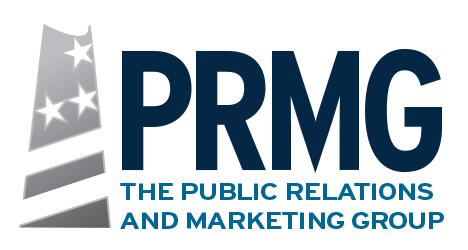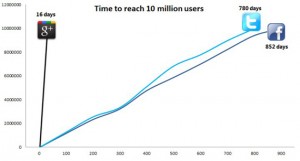12 Tips to Help You Survive and Thrive in a Double Dip
I thought it might be helpful to revisit an article I wrote on the “Top 10 Tips for Marketing in a Recession” in January of 2009. While many of the suggestions still apply and I remain optimistic about the long-term prospects for the U.S. economy, I believe that the economy of today is the new normal in the face of a number of economic hurdles, including high unemployment, international financial unrest and a depression in the real estate market. It is my personal opinion that things won’t change significantly, at least until business confidence can be restored with the election of a new President and Congress in the Fall of 2012. These recommendations suggest that while it is necessary to market, you must do so with the idea of slowly maintaining and growing your business, while continuing to overcome a myriad of external challenges.
Starting a Business in a Recession — If you are thinking about starting a new business in a recession, you are not alone. Small businesses are often the greatest generators of new jobs. This is one of the reasons why the unemployment rate remains high in the United States. Often, when people are laid off, they take the opportunity to start their own business. However, think hard before you start a business, especially if it is a restaurant or a retailer. For example, the highly competitive restaurant industry sees 27% of restaurant startups fail within the first year, according to a 10-year study by Cornell University and Michigan State University. If you are looking to open a restaurant or retailer, make sure that your business will be unique and that you are confident that there will be a demand for your product or services. Think along the lines of necessities, including health care or products like coffee. For example, think of the Dunkin Donuts and 7-Eleven franchises. Another essential point to keep in mind is that before you start your new business, you must set aside plenty of money for marketing. For more information on this, read our article, “If You Build It, They Won’t Necessarily Come…”
One of the first overall suggestions I can make is that when choosing whether or not to start a business in a recession, you must identify what the most profitable businesses are and which ones can give you the most competitive advantage. In a recession, consumers require value more than ever. Just look at Walmart, Target and McDonalds. These companies have done relatively well during the recession because of the value they offer consumers. However, there is an exception with high end luxury markets. Although these markets did take a hit early in the recession as real estate values and stock market portfolios declined, they did bounce back. If you can effectively market to wealthier geographies and demographics, you should do so. If your product is a necessity, for consumers or for businesses, then say it is and why it is. For example, Apple did very well during the recession because consumers viewed their products as necessities. Also, if you have products that appeal to children, then make sure you market them effectively. Parents will be more likely to self-sacrifice than to deprive their children, especially when it comes to their education, health and development.
1. Focus on Your Customers — If you already have a business or non-profit organization, focus on your current customers and clients. Continue to do what you can to keep your current customers returning and always make sure they are satisfied. If you are a retailer or restaurant, send your customers a gift card or special offer to show your appreciation. If you are a professional, hold the line on your rates, provide volume discounting or some other type of acknowledgement of their patronage. From a marketing perspective, you should periodically send your clients e-newsletters, newsletters, use direct mail and engage them in social media to communicate special offers or news to keep them in the loop. Your next step in marketing your current business should be to focus on your website because this is the online hub of information and content for your organization.
2. Develop Your Website — Since you may have extra time now, it is time to focus on your website. Ask yourself: What do I need to do to get higher search engine rankings? The answer is to make sure you have a strong public relations and content creation program, develop your website’s on-page optimization and utilize off-page optimization techniques. For more information on on-page optimization, read our article, “On-page Optimization and Keywords.” For off-page optimization tips, read our article, “No, We Can’t Get You Those Results Overnight.” One tip is to incorporate microsites into your Web strategy. Microsites are essential to maximizing your Web presence and boosting your organization’s search engine rankings. Consider building microsites for specific products or services that your company offers. To compliment your website, you may also decide to create a blog. You may need some development help, but once your blog is created and your new sites are set up, you can use your CMS system or Adobe Contribute for sites created in HTML to make changes yourself. The goal for your blog should be to develop excellent content that will compel visitors to return and share with others. We highly recommend providing downloadable content on your site that visitors will be willing to give up an email address or other contact information for.
For more information on developing your website, read our article, “A Practical Guide to Developing Effective Websites.”
For valuable tips on Web optimization, download our free guide, “Web Optimization Tips.”
You can view examples of websites that The Public Relations and Marketing Group has created on behalf of its clients here.
3. Build Your Social Media Presence — It is crucial to share your content and communicate with your audience on appropriate social media platforms. Communicating with friends and followers through social media will help build your networks and engage your current customers. If you’re just starting out with social media, focus on the big three: Facebook, Twitter and LinkedIn. If your business is B2C, focus your efforts more on Facebook and Twitter. For B2B companies, LinkedIn should be your first priority. Developing a strong presence on social media websites does require time but it can prove to be an extremely cost-effective way to market your business, which is especially helpful during rough economic times. For example, create a Facebook fan page for your company to communicate with customers and share photos and news. Twitter, the immensely popular micro-blogging network, is an excellent communication outlet to send short messages to a huge audience. LinkedIn is a professional networking site that allows users to rapidly build their connections, browse and post job offerings and share industry expertise with other professionals in their field. Determine which of these social networking sites you should devote your time to and build a strong presence there.
Beginners can learn how to create a social media presence for their business by reading our article, “Getting Started with Social Media.”
For more information on building a strong presence on Facebook, read our article, “10 Steps to Getting the Most Out of Facebook.”
To learn how to make the most of your Twitter account, read our article, “Secrets to Twitter Marketing.”
For more information on using LinkedIn effectively, read our article, “Making the Right Connections with LinkedIn.”
4. Network — Old-fashioned networking may also help you build professional contacts and reach potential clients at low cost. If you are a professional, attend networking events in your industry and other trade groups where you may find prospective clients. To demonstrate your position as an expert in your field, professionals can hold original lectures, in-house if possible, to keep costs lower. Retailers and restaurants can hold product demonstrations or workshops. Always promote these events to the public using press releases, social media and e-blasts.
Everything up to this point can be done at low cost. However, often this may not be enough and you will also need to advertise to successfully market your business. In a recession, it is often cheaper to advertise and you may have more leverage. However, always keep in mind that you should never advertise in something solely because it is cheap or within your budget. It is always better to spend more on something that is more likely to work for you. For example, your organization may benefit from targeted ads placed in print outlets, on the Web, through email or on television.
5. Focus Your Print Advertising — When using traditional print advertising outlets, make sure that you have the budget to sustain your advertising efforts. If you have a local business, consider using D-Cards and high visibility print ads. To ensure that your advertisements are reaching the right audience, micro-target your ads by placing them in specialty publications. For example, you may want to target a local community by using the front pages of Pennysavers or local newspapers, as well as D-Cards. If your services or products appeal to a specific trade group or demographic, consider specialty publications that service that group. If you need to advertise in a daily newspaper, be sure to put together a catchy ad that is in a high visibility location. In addition, Newsday’s daily deals are often good for retailers and those in the hospitality industry.
6. Target Your Web Advertising — For those on a budget, I would strongly recommend using Web advertising. As studies repeatedly show, more and more people are turning to online sources when searching for products, services or information. This is why Web advertising is so important when marketing your business. Popular Web advertising outlets include Google AdWords, social media ads, landing pages and daily deal websites.
7. Use Google AdWords — Google AdWords lets you create and run text, display or video ads for your business with a custom budget. This is good for marketers on a budget because you will only pay if someone clicks on your advertisement. These ads are displayed under “Sponsored Links” beside search results when someone searches Google using one of your listed keywords. Google AdWords is so effective because you are advertising to an audience who is already interested in what you have to offer.
8. Advertise with Social Media — Social media websites offer highly quantifiable and cost-effective advertisements. Like Google AdWords, you will only pay when someone clicks on your ad. Through social media advertising, you can control your budget, build fans, drive traffic to your website and micro-target based on user demographics, gender, age and interests. For B2C companies, use Facebook Ads to reach your audience. Facebook is able to micro-target based on what users have listed as interests. For B2B organizations, LinkedIn advertising can be effective. LinkedIn offers rich display and text ads that can reach millions of active business professionals. LinkedIn advertising is unique because it can target based on job title.
To learn more about Facebook advertising, read our article, “Interest-Based Advertising.”
9. Create Landing Pages — A landing page is a single Web page that appears in response to a reader clicking on an advertisement. A landing page is little more than a Web page that contains specific content and can be used as part of an effective Web advertising campaign. When used in a Web advertising campaign, landing pages should provide access to your entire website but the goal here is for the visitor to interact with the content on the page. By offering downloadable content, you provide your audience valuable material in exchange for their contact information. This will help you generate business leads and build your email lists. For more information on landing pages, read our article, “Five Steps to Generating New Business through Web Advertising, Landing Pages and Emails.”
10. Use Daily Deals Websites — Daily deals websites and phone applications are immensely popular, especially for those with smart phones. These websites and phone apps cater to a vast audience that is interested in obtaining new deals and visiting new venues. Daily deal marketing services such as Groupon and LivingSocial collect users’ email addresses and send them a featured email every day, offering a heavily discounted deal from a local business. Recipients may buy the coupon, redeem it at the local business and get the product or service they paid for. For example, on Groupon, you and the daily deal site will split the revenues from coupon sales and you will pay nothing upfront to Groupon. Running ad campaigns on sites such as Groupon and LivingSocial can prove to be hugely beneficial in attracting customers to your business, especially if you are in the restaurant or hospitality industry or offer some kind of service to your guests.
11. Use Take-Over Emails — Your business can benefit by using take-over emails in your email advertising strategy. Take-over emails allow you to take advantage of another organization’s broad email list. For example, Newsday and other publications offer take-over emails for $50 per thousand, meaning they will send out your email for you to their audience. When creating your email advertisement, make sure that the most important information appears at the top, under the fold of the email, and that you have a compelling title that will encourage your readers to read more. Include links to landing pages, your website, social media profiles and contact information.
To learn more about email advertising and take-over emails, read our article, “Web Ads, E-newsletters and Take-over Emails.”
12. Advertise on Television — Sometimes, you may need to reach large numbers of people in a short time frame. Under these circumstances, I would highly recommend considering television advertising. When advertising on television, it is important to narrow your target audience by using specific programming. Consider upcomers like FiOS, for example. If you are looking to reach businesspeople or wealthier viewers, consider advertising on CNBC or news channels. If your business’ product or service is catered to women, choose to advertise on channels such as Lifetime, WE or HGTV.







